José Suárez-Varela
Meta-Learning-Based Handover Management in NextG O-RAN
Dec 26, 2025Abstract:While traditional handovers (THOs) have served as a backbone for mobile connectivity, they increasingly suffer from failures and delays, especially in dense deployments and high-frequency bands. To address these limitations, 3GPP introduced Conditional Handovers (CHOs) that enable proactive cell reservations and user-driven execution. However, both handover (HO) types present intricate trade-offs in signaling, resource usage, and reliability. This paper presents unique, countrywide mobility management datasets from a top-tier mobile network operator (MNO) that offer fresh insights into these issues and call for adaptive and robust HO control in next-generation networks. Motivated by these findings, we propose CONTRA, a framework that, for the first time, jointly optimizes THOs and CHOs within the O-RAN architecture. We study two variants of CONTRA: one where users are a priori assigned to one of the HO types, reflecting distinct service or user-specific requirements, as well as a more dynamic formulation where the controller decides on-the-fly the HO type, based on system conditions and needs. To this end, it relies on a practical meta-learning algorithm that adapts to runtime observations and guarantees performance comparable to an oracle with perfect future information (universal no-regret). CONTRA is specifically designed for near-real-time deployment as an O-RAN xApp and aligns with the 6G goals of flexible and intelligent control. Extensive evaluations leveraging crowdsourced datasets show that CONTRA improves user throughput and reduces both THO and CHO switching costs, outperforming 3GPP-compliant and Reinforcement Learning (RL) baselines in dynamic and real-world scenarios.
Uncovering Issues in the Radio Access Network by Looking at the Neighbors
Apr 20, 2025Abstract:Mobile network operators (MNOs) manage Radio Access Networks (RANs) with massive amounts of cells over multiple radio generations (2G-5G). To handle such complexity, operations teams rely on monitoring systems, including anomaly detection tools that identify unexpected behaviors. In this paper, we present c-ANEMON, a Contextual ANomaly dEtection MONitor for the RAN based on Graph Neural Networks (GNNs). Our solution captures spatio-temporal variations by analyzing the behavior of individual cells in relation to their local neighborhoods, enabling the detection of anomalies that are independent of external mobility factors. This, in turn, allows focusing on anomalies associated with network issues (e.g., misconfigurations, equipment failures). We evaluate c-ANEMON using real-world data from a large European metropolitan area (7,890 cells; 3 months). First, we show that the GNN model within our solution generalizes effectively to cells from previously unseen areas, suggesting the possibility of using a single model across extensive deployment regions. Then, we analyze the anomalies detected by c-ANEMON through manual inspection and define several categories of long-lasting anomalies (6+ hours). Notably, 45.95% of these anomalies fall into a category that is more likely to require intervention by operations teams.
* 7 pages
Detecting Contextual Network Anomalies with Graph Neural Networks
Dec 11, 2023



Abstract:Detecting anomalies on network traffic is a complex task due to the massive amount of traffic flows in today's networks, as well as the highly-dynamic nature of traffic over time. In this paper, we propose the use of Graph Neural Networks (GNN) for network traffic anomaly detection. We formulate the problem as contextual anomaly detection on network traffic measurements, and propose a custom GNN-based solution that detects traffic anomalies on origin-destination flows. In our evaluation, we use real-world data from Abilene (6 months), and make a comparison with other widely used methods for the same task (PCA, EWMA, RNN). The results show that the anomalies detected by our solution are quite complementary to those captured by the baselines (with a max. of 36.33% overlapping anomalies for PCA). Moreover, we manually inspect the anomalies detected by our method, and find that a large portion of them can be visually validated by a network expert (64% with high confidence, 18% with mid confidence, 18% normal traffic). Lastly, we analyze the characteristics of the anomalies through two paradigmatic cases that are quite representative of the bulk of anomalies.
GraphCC: A Practical Graph Learning-based Approach to Congestion Control in Datacenters
Aug 09, 2023



Abstract:Congestion Control (CC) plays a fundamental role in optimizing traffic in Data Center Networks (DCN). Currently, DCNs mainly implement two main CC protocols: DCTCP and DCQCN. Both protocols -- and their main variants -- are based on Explicit Congestion Notification (ECN), where intermediate switches mark packets when they detect congestion. The ECN configuration is thus a crucial aspect on the performance of CC protocols. Nowadays, network experts set static ECN parameters carefully selected to optimize the average network performance. However, today's high-speed DCNs experience quick and abrupt changes that severely change the network state (e.g., dynamic traffic workloads, incast events, failures). This leads to under-utilization and sub-optimal performance. This paper presents GraphCC, a novel Machine Learning-based framework for in-network CC optimization. Our distributed solution relies on a novel combination of Multi-agent Reinforcement Learning (MARL) and Graph Neural Networks (GNN), and it is compatible with widely deployed ECN-based CC protocols. GraphCC deploys distributed agents on switches that communicate with their neighbors to cooperate and optimize the global ECN configuration. In our evaluation, we test the performance of GraphCC under a wide variety of scenarios, focusing on the capability of this solution to adapt to new scenarios unseen during training (e.g., new traffic workloads, failures, upgrades). We compare GraphCC with a state-of-the-art MARL-based solution for ECN tuning -- ACC -- and observe that our proposed solution outperforms the state-of-the-art baseline in all of the evaluation scenarios, showing improvements up to $20\%$ in Flow Completion Time as well as significant reductions in buffer occupancy ($38.0-85.7\%$).
MAGNNETO: A Graph Neural Network-based Multi-Agent system for Traffic Engineering
Mar 31, 2023



Abstract:Current trends in networking propose the use of Machine Learning (ML) for a wide variety of network optimization tasks. As such, many efforts have been made to produce ML-based solutions for Traffic Engineering (TE), which is a fundamental problem in ISP networks. Nowadays, state-of-the-art TE optimizers rely on traditional optimization techniques, such as Local search, Constraint Programming, or Linear programming. In this paper, we present MAGNNETO, a distributed ML-based framework that leverages Multi-Agent Reinforcement Learning and Graph Neural Networks for distributed TE optimization. MAGNNETO deploys a set of agents across the network that learn and communicate in a distributed fashion via message exchanges between neighboring agents. Particularly, we apply this framework to optimize link weights in OSPF, with the goal of minimizing network congestion. In our evaluation, we compare MAGNNETO against several state-of-the-art TE optimizers in more than 75 topologies (up to 153 nodes and 354 links), including realistic traffic loads. Our experimental results show that, thanks to its distributed nature, MAGNNETO achieves comparable performance to state-of-the-art TE optimizers with significantly lower execution times. Moreover, our ML-based solution demonstrates a strong generalization capability to successfully operate in new networks unseen during training.
RouteNet-Fermi: Network Modeling with Graph Neural Networks
Dec 22, 2022



Abstract:Network models are an essential block of modern networks. For example, they are widely used in network planning and optimization. However, as networks increase in scale and complexity, some models present limitations, such as the assumption of markovian traffic in queuing theory models, or the high computational cost of network simulators. Recent advances in machine learning, such as Graph Neural Networks (GNN), are enabling a new generation of network models that are data-driven and can learn complex non-linear behaviors. In this paper, we present RouteNet-Fermi, a custom GNN model that shares the same goals as queuing theory, while being considerably more accurate in the presence of realistic traffic models. The proposed model predicts accurately the delay, jitter, and loss in networks. We have tested RouteNet-Fermi in networks of increasing size (up to 300 nodes), including samples with mixed traffic profiles -- e.g., with complex non-markovian models -- and arbitrary routing and queue scheduling configurations. Our experimental results show that RouteNet-Fermi achieves similar accuracy as computationally-expensive packet-level simulators and it is able to accurately scale to large networks. For example, the model produces delay estimates with a mean relative error of 6.24% when applied to a test dataset with 1,000 samples, including network topologies one order of magnitude larger than those seen during training.
RouteNet-Erlang: A Graph Neural Network for Network Performance Evaluation
Feb 28, 2022
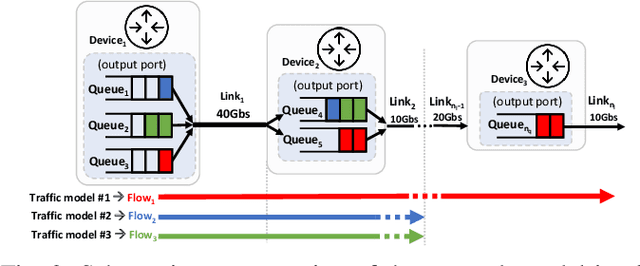
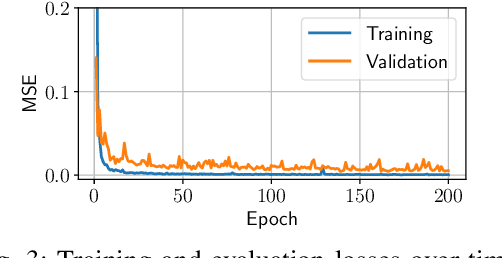
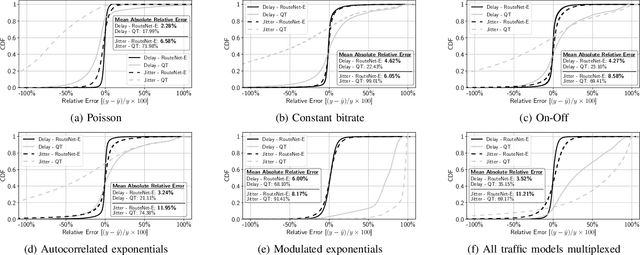
Abstract:Network modeling is a fundamental tool in network research, design, and operation. Arguably the most popular method for modeling is Queuing Theory (QT). Its main limitation is that it imposes strong assumptions on the packet arrival process, which typically do not hold in real networks. In the field of Deep Learning, Graph Neural Networks (GNN) have emerged as a new technique to build data-driven models that can learn complex and non-linear behavior. In this paper, we present \emph{RouteNet-Erlang}, a pioneering GNN architecture designed to model computer networks. RouteNet-Erlang supports complex traffic models, multi-queue scheduling policies, routing policies and can provide accurate estimates in networks not seen in the training phase. We benchmark RouteNet-Erlang against a state-of-the-art QT model, and our results show that it outperforms QT in all the network scenarios.
Graph Neural Networks for Communication Networks: Context, Use Cases and Opportunities
Dec 29, 2021
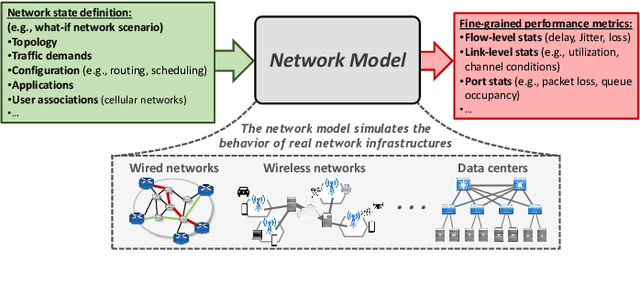
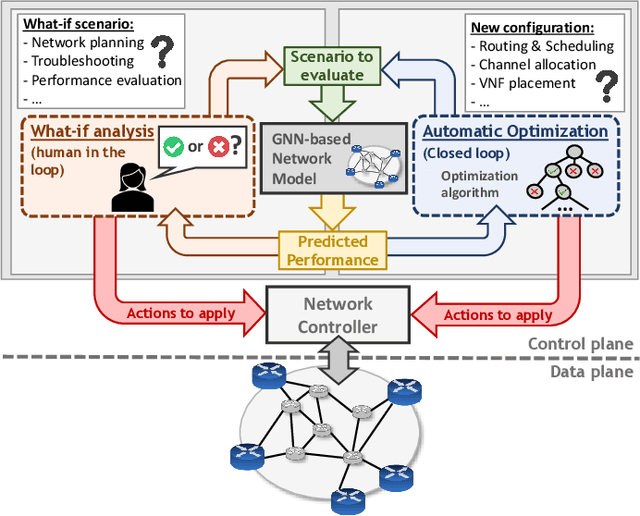
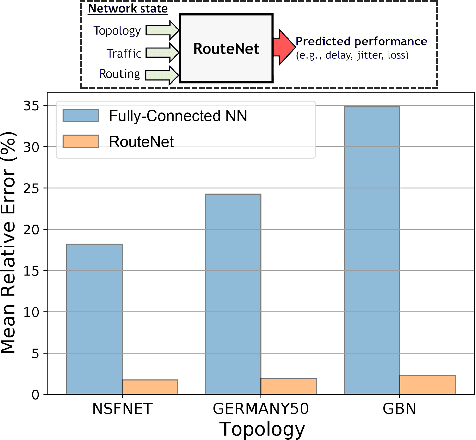
Abstract:Graph neural networks (GNN) have shown outstanding applications in many fields where data is fundamentally represented as graphs (e.g., chemistry, biology, recommendation systems). In this vein, communication networks comprise many fundamental components that are naturally represented in a graph-structured manner (e.g., topology, configurations, traffic flows). This position article presents GNNs as a fundamental tool for modeling, control and management of communication networks. GNNs represent a new generation of data-driven models that can accurately learn and reproduce the complex behaviors behind real networks. As a result, such models can be applied to a wide variety of networking use cases, such as planning, online optimization, or troubleshooting. The main advantage of GNNs over traditional neural networks lies in its unprecedented generalization capabilities when applied to other networks and configurations unseen during training, which is a critical feature for achieving practical data-driven solutions for networking. This article comprises a brief tutorial on GNNs and their possible applications to communication networks. To showcase the potential of this technology, we present two use cases with state-of-the-art GNN models respectively applied to wired and wireless networks. Lastly, we delve into the key open challenges and opportunities yet to be explored in this novel research area.
Scaling Graph-based Deep Learning models to larger networks
Oct 04, 2021
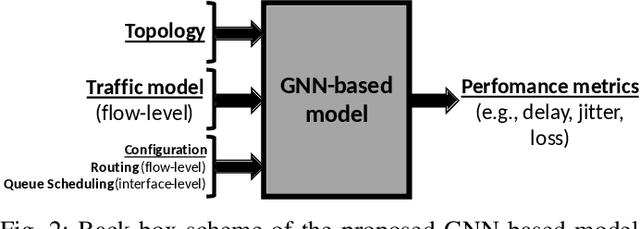
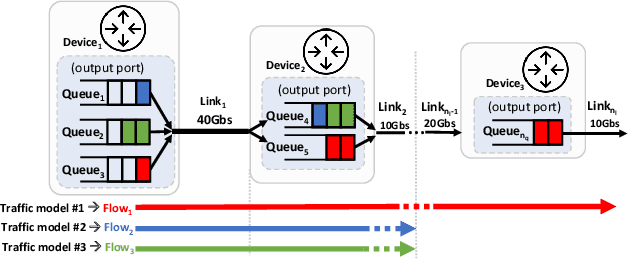
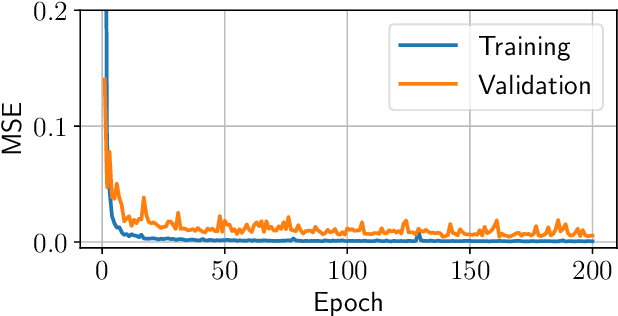
Abstract:Graph Neural Networks (GNN) have shown a strong potential to be integrated into commercial products for network control and management. Early works using GNN have demonstrated an unprecedented capability to learn from different network characteristics that are fundamentally represented as graphs, such as the topology, the routing configuration, or the traffic that flows along a series of nodes in the network. In contrast to previous solutions based on Machine Learning (ML), GNN enables to produce accurate predictions even in other networks unseen during the training phase. Nowadays, GNN is a hot topic in the Machine Learning field and, as such, we are witnessing great efforts to leverage its potential in many different fields (e.g., chemistry, physics, social networks). In this context, the Graph Neural Networking challenge 2021 brings a practical limitation of existing GNN-based solutions for networking: the lack of generalization to larger networks. This paper approaches the scalability problem by presenting a GNN-based solution that can effectively scale to larger networks including higher link capacities and aggregated traffic on links.
IGNNITION: Bridging the Gap Between Graph Neural Networks and Networking Systems
Sep 14, 2021
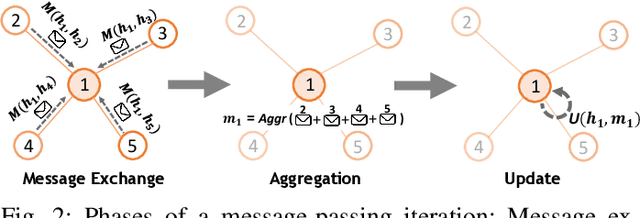
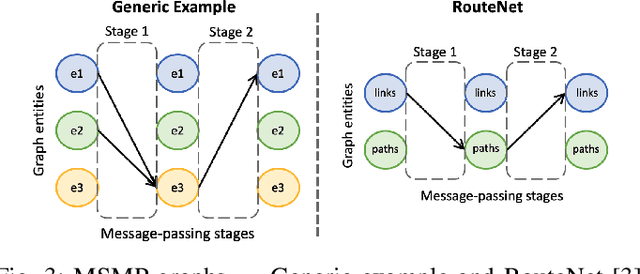
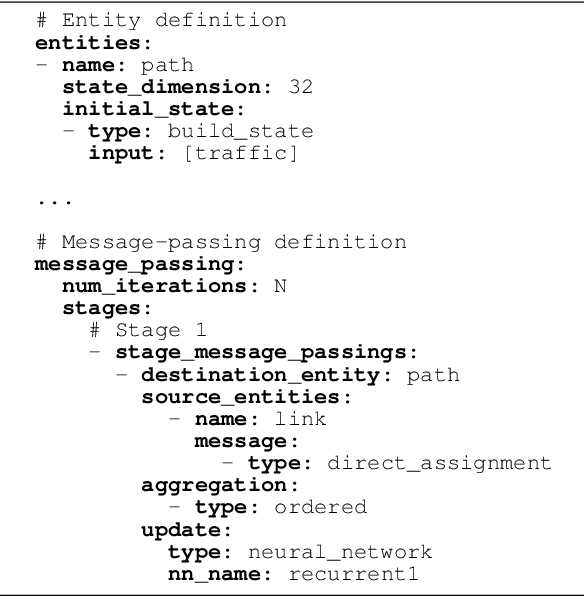
Abstract:Recent years have seen the vast potential of Graph Neural Networks (GNN) in many fields where data is structured as graphs (e.g., chemistry, recommender systems). In particular, GNNs are becoming increasingly popular in the field of networking, as graphs are intrinsically present at many levels (e.g., topology, routing). The main novelty of GNNs is their ability to generalize to other networks unseen during training, which is an essential feature for developing practical Machine Learning (ML) solutions for networking. However, implementing a functional GNN prototype is currently a cumbersome task that requires strong skills in neural network programming. This poses an important barrier to network engineers that often do not have the necessary ML expertise. In this article, we present IGNNITION, a novel open-source framework that enables fast prototyping of GNNs for networking systems. IGNNITION is based on an intuitive high-level abstraction that hides the complexity behind GNNs, while still offering great flexibility to build custom GNN architectures. To showcase the versatility and performance of this framework, we implement two state-of-the-art GNN models applied to different networking use cases. Our results show that the GNN models produced by IGNNITION are equivalent in terms of accuracy and performance to their native implementations in TensorFlow.
 Add to Chrome
Add to Chrome Add to Firefox
Add to Firefox Add to Edge
Add to Edge